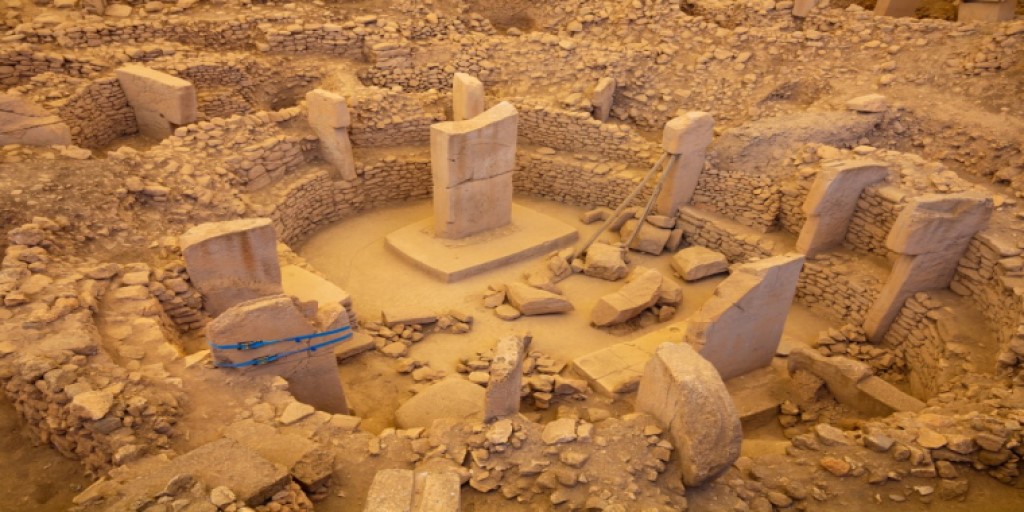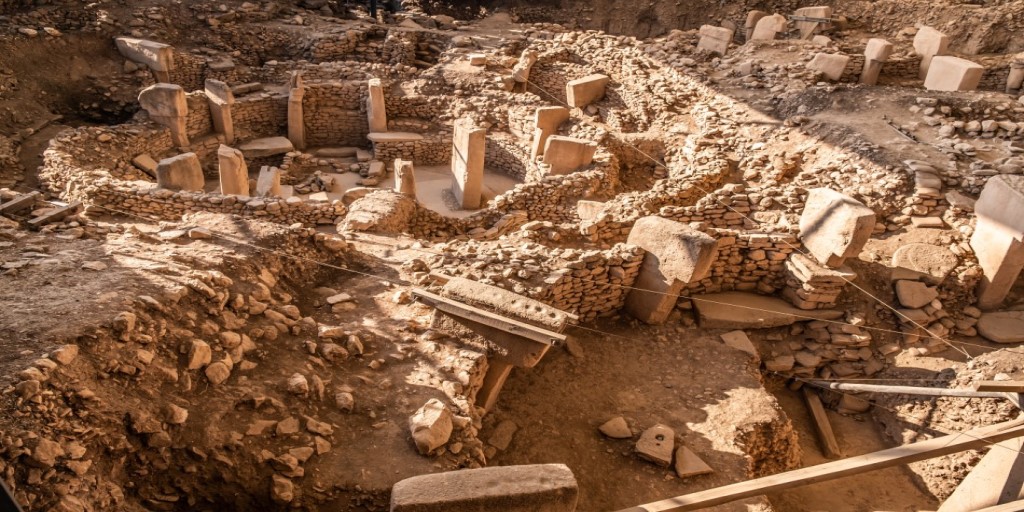Gobekli Tepe : the Greatest Archeological Discovery of the Century
 Around 11km northeast of Urfa, ‘Pot Belly Hill’ was first unearthed in 1995, and its circle of Neolithic megaliths is estimated to date from 10,000 BC, around 7000 years before Stonehenge. A wooden walkway circles the site, making it easy to study the centuries-old stone stone pillars with exquisitely stylised carvings of lions, foxes and vultures. Previously the site was thought to be a medieval cemetery, but is now thought to be the world’s first place of worship.
Around 11km northeast of Urfa, ‘Pot Belly Hill’ was first unearthed in 1995, and its circle of Neolithic megaliths is estimated to date from 10,000 BC, around 7000 years before Stonehenge. A wooden walkway circles the site, making it easy to study the centuries-old stone stone pillars with exquisitely stylised carvings of lions, foxes and vultures. Previously the site was thought to be a medieval cemetery, but is now thought to be the world’s first place of worship.
We visit many UNESCO World Heritage sites in Turkey on our round the country tours. Including transport, accommodation and professional guides,
Discovery of Göbekli Tepe Temple
In 1994, Klaus Schmidt reviewed documents written in 1963, about a small hill, near Sanliurfa, that was possibly hiding artefacts dating from the Neolithic period, also known as the last days of the Stone Age.
Other archaeologists considered the site to lack importance. They assumed the only artefacts to be found, were farming tools, of which thousands have already been unearthed, and are sitting in museums all over the world.
Klaus ignored the advice of his colleagues and in 1995, his team started digging. Instead of farming tools, he uncovered large T-shape pillars in circular shapes that suggested a form of religious practise.
On the pillars, he saw deep engravings of animals, that were traditionally hunted for food and on one pillar, was a depiction of a headless man with a large erect penis. The discovery of animal bones also suggested group sacrifices.
The discovery of this man-made construction, built during the Neolithic period, not only threw the history world into chaos, but religion as well. All previously published documents stated Neolithic man was nothing but a fierce hunter before downing his killing tools, to be farmers.
Gobekli Tepe disputed everything we knew about human evolution and anyone who claimed the Bible said the world was approximately 6000 years old just had their theory completely blown out of the water.
The carved symbols on the Göbekli Tepe megaliths also predate Sumerian hieroglyphics – traditionally thought to be the basis of written languages – by around 8000 years. Geomagnetic surveys and ground-penetrating radar systems have identified another 16 ancient megalithic rings buried nearby, and at present only 5% of the entire site has been excavated.
Gobekli Tepe Theories: Aliens and the Garden of Eden
Gobekli Tepe is the crème de la crème of historical discoveries. Some labelled it the Turkish Stonehenge, although it is 6000 years older than its UK counterpart and 7000 years older than the pyramids.

National Geographic called it the “Birth of Religion”
The New Scientist publication suggested it was built to worship Sirius, the Dog Star in the sky
Other experts insisted Neolithic tools, were not strong enough to make the carvings on the pillars, therefore alien technology was used.
Some religious experts claimed it could be the “Garden of Eden”
Other enthusiasts suggested there was a lost civilization that we knew nothing about
Further excavations did not reveal any signs of habitation by man at the site, no source of water, crop growth, or living structures. This boasted the suggestion that Gobekli Tepe was the world’s first religious temple and the estimated date of construction, between the 10th and 9th century BC, ensured it trumped and outshone the historical mysteries of the pyramids and sphinx of Egypt.